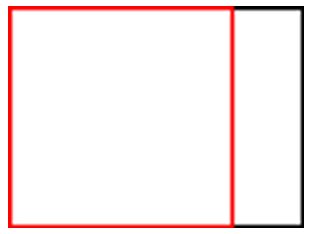TV Line
TV Lines are the standard measure of an analog TV's Resolution. Rather than represent discrete locations on a grid, as Pixels in a digital Frame do, TV Lines indicate the maximum number of identifiable changes that can be produced along a single (horizontal) Scanline of an analog TV. Much like film, where Visual Resolution is measured in Line Pairs, for analog TVs, the number of black and white (vertical) lines that can be seen on the screen at the same time is used to determine TV Lines. However, unlike film, the number of individual lines is used instead of counting each pair of black and white lines together. If you wanted to compare the Visual Resolution of film and a TV you'd need to divide the number of TV Lines in half to find the number of Line Pairs.
TV Lines vs Digital Resolution
Although TV Lines are a measure of Visual Resolution, they're not directly equivalent to the Resolution of a digitally encoded video frame. The number of TV Lines displayed on a TV may vary from source to source, and so can the number of TV Lines generated on different TVs from a single source. The Resolution of an encoded frame, on the other hand, remains constant.
TV Lines per Picture Height
Rather than considering the entire 4:3 picture, the traditional measurement of TV Lines for an analog TV is in Lines per Picture Height. This is the number of TV Lines in the largest square (1:1 AR) area of a TV screen, and is equal to 75% of the total number of TV Lines for the entire screen. The red square in the image below is the area considered for Lines per Picture Height.

Analog TV Signals
Just as every TV has a maximum number of TV lines it can produce, any given analog video signal has a maximum number of TV Lines it can represent. This number is determined by the Frequency of the signal. Since each pair of TV Lines (one black and one white) is equivalent to a single waveform in an analog video signal, if you know the signal's frequency and the Active Area of a Scanline for the TV system used (PAL or NTSC) you can calculate the number of TV Lines it can "contain".
For example, PAL B/G has a 5MHz signal, meaning 5 Million waveforms per second. The Active Area of a PAL picture is 52µs, resulting in 260 complete waveforms (5,000,000 x .000052) or 520 TV Lines ( (5,000,000 x .000052) x 2).
Video Capture
When capturing analog video you may have a choice of resolutions. According to the Nyquist-Shannon Sampling Theorem you need to sample at slightly more than twice the analog waveform's frequency. For our PAL signal the frequency is 5MHz, so we should sample at more than 10MHz. Since each pixel is a sample that means a resolution wider than 520 pixels. 720x480 (NTSC), 720x576 (PAL), and 640x480 (square pixels) are all common Capture resolutions this is no problem.
Related Guides
Digital Video Fundamentals - Resolution and Aspect Ratio
Resizing DVD-Video To Square Pixels
Related glossary terms
Related software tools

|
VirtualDub (Open source)
VirtualDub is an extremely efficient video capture and processing program. |
|

|
VirtualDub (Freeware)
Extremely efficient video capture and processing program. This version is not the latest one, but this is the last version that has ASF support |
|

|
VirtualDubMod (Freeware)
VirtualDubMod is a modified version of the excellent video handling tool, VirtualDub. VirtualDubMod adds support for MPEG-2, AC3, Ogg Vorbis and VBR MP3 to the original VirtualDub. |
|

|
VirtualDubMod Surround (Open source)
VirtualDubMod Surround is a VirtualDubMod with some bugs fixed. It's also capable of utilizing 6 channel audio ACM encoders. |





